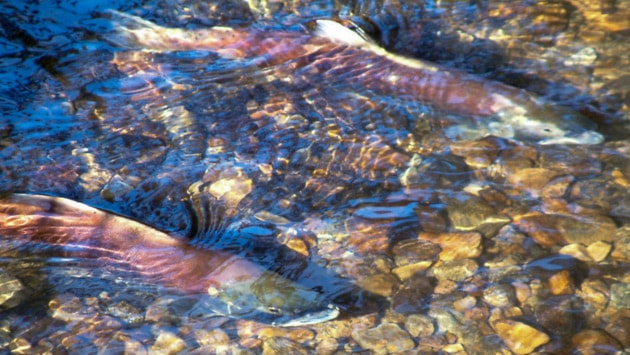Just a few days before Valentine's Day, the federal government has shown some love for the Okanagan in the form of $397,000 grant to study water needs in the valley.
The Okanagan Basin Water Board is the recipient of the funds, which are coming from the federal Gas Tax Fund. Water in the Okanagan might seem like an inexhaustible commodity with large beautiful lakes, but the region is also known for its water challenges and Canada’s largest population growth.
“Water is precious in the Okanagan, where we have one of the lowest rates of water available per person than anywhere in Canada but have one of the highest rates of use in the country,” said Doug Findlater, OBWB chair.
Thanks to this funding, a two-year study will begin looking at the Environmental Flow Needs (EFNs) — or the water needs of fish and aquatic ecosystems — in the Okanagan. The phase of the project will include approximately 10 stream-by-stream studies, using flow monitoring equipment in streams identified as important for fish habitat throughout the valley.
Eighteen streams are being considered for the study, including several in Penticton and other South Okanagan communities: Penticton, Shingle, Trout, Naramata, Vaseaux and Inkaneep Creeks are all on the list of possible study locations.
Other waterways being considered include Coldstream, Equesis, Inkaneep, McDougall, McLean, Mill, Mission, Nashwaito, Powers, Shuttleworth, Trepanier, Vernon and Whiteman Creeks.
The work will be a partnership between the OBWB and Okanagan Nation Alliance’s (ONA) Fisheries Department and the B.C. Ministry of Forests, Lands and Natural Resource Operations (FLNRO).
Findlater said that with the funding, the partnership will be conducting the largest environmental flow needs study in Canada calling it an essential process needed to sustainably manage the waters of the valley.
Anna Warwick Sears, the OBWB’s executive director, the need for this project was identified in 2010 when the agency completed Phase 2 of its Water Supply and Demand Study.
“Since then, concerns have continued to grow about the number of water licences on Okanagan streams, so we started working with the province on how to make the best licensing decisions,” said Sears, adding that both sides realized there was a critical information gap regarding the needs of fish.
“As we reflect on the drought of last summer and the competing needs for water, and as those needs continue to multiply with population growth, this project is aimed at helping make the best water use decisions possible,” Sears said, noting the study will not only help the provincial decision making, but also local governments in making better-informed development and infrastructure planning decisions. As well, it will aid the ONA in their ongoing recovery efforts.
“Instead of waiting to see the fish gasping in the streams, this will allow us to know how much water they need,” said Sears. “It’s like an advanced warning system, letting us know when and where restrictions and regulations are needed.”
Grand Chief Stewart Phillip, chair of the ONA, noted that the Okanagan Nation holds constitutional rights related to water.
“For decades, the Syilx Peoples have been developing watershed-based processes and policies to ensure our water sustainability responsibly is addressed and informed by our traditional ecological knowledge in a meaningful way,” said Phillip.
Pauline Terbasket, executive director of the ONA added that the collaborative project offered an opportunity to continue supporting these efforts.
”We will be working together to develop how we collect and manage data in the Okanagan,” said Terbasket. “This comes at a critical time with us all facing the backdrop of climate change and the likelihood of increased drought.”
